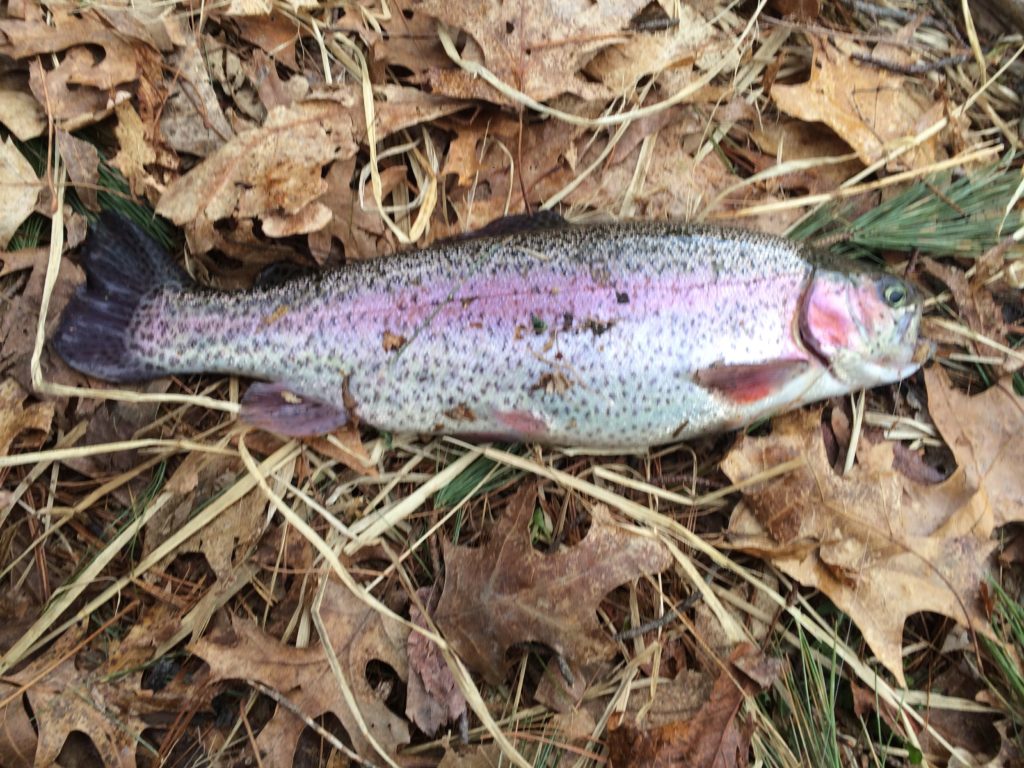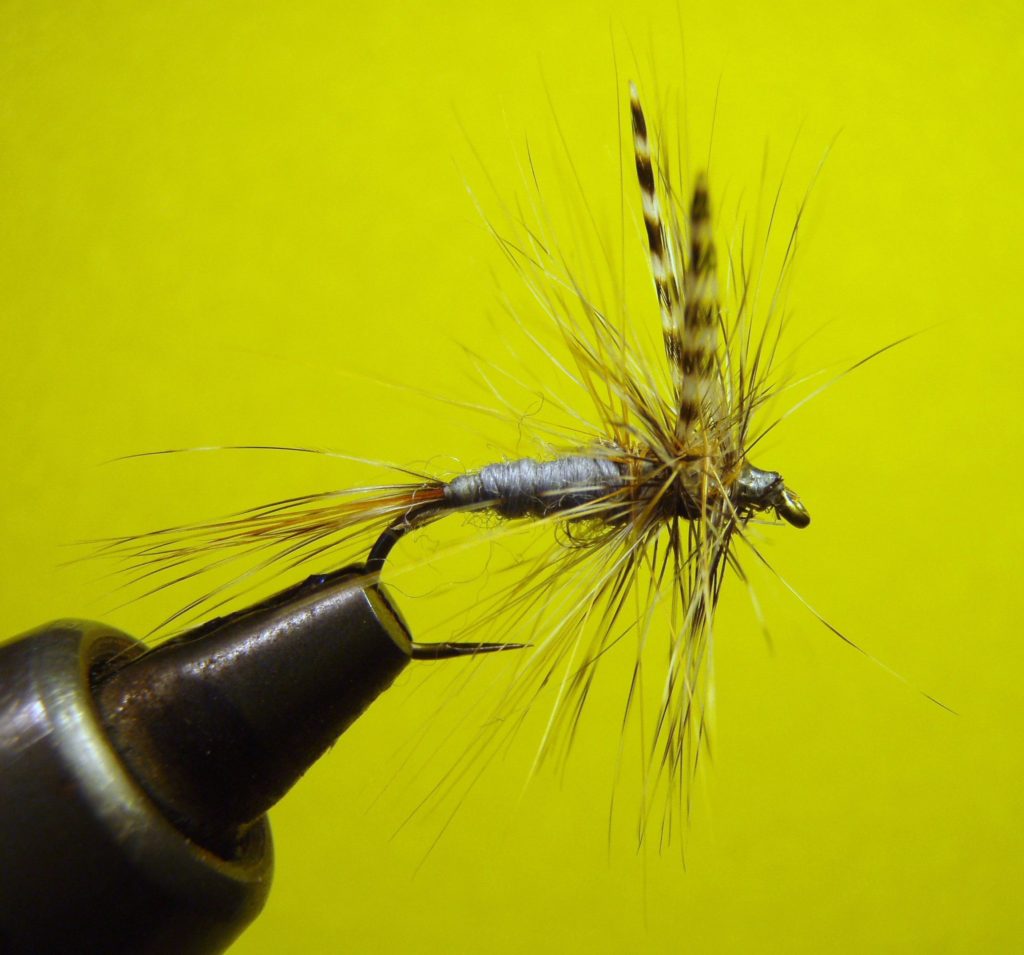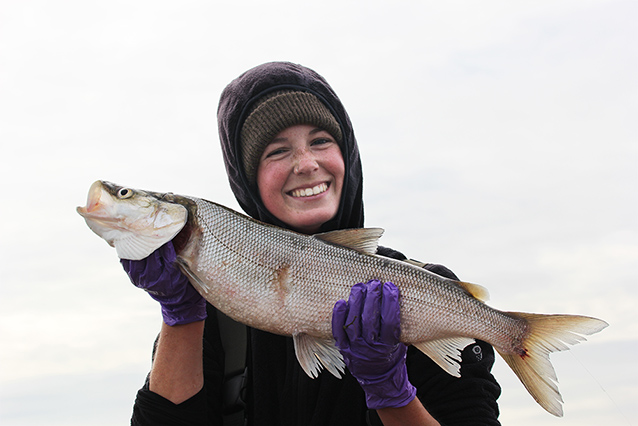Fish for 2 Hours If No Catch Continue Until the First Catch
Pretty much every catch and release fisherman will get this question at some point: "doesn't that hurt the fish?" The debate over whether catch and release (and, for that matter, fishing itself) is humane has been going on for decades. Some places, like Germany, have banned the practice outright. In other places, including many popular trout streams in the US, it's mandatory. You'll find strong voices on both sides of the argument, and no clear answers.
To understand whether catch and release hurts fish, it's important to first understand what we mean by "hurt." It's also important to understand that there are many ways to minimize the impact on the fish through various best practices. In the end, the decision whether to practice catch and release is a personal one, with no one way that suits every angler.
It Depends On Your Definition Of "Hurt"
Do Fish Feel Pain?

One of the most contentious arguments over catch and release is whether fish feel pain. For years, conventional thinking was that they don't. But more recent studies have cast doubt on that idea. For one, many fish have so-called nociceptors, the receptors that sense pain in humans and other animals. Studies have also shown that fish react to irritants and other painful stimuli in the same way as animals that do feel pain (like humans).
One such study injected acid in the lips of rainbow trout. The trout began rubbing their lips on the side of the tank and otherwise behaving in a panicked way. But trout injected with both the acid and morphine did not react as strongly. Morphine, like most painkillers, does nothing to alleviate the actual cause of the pain, only the sensation of pain itself. The fact that the trout injected with morphine calmed down suggests that it's that sensation of pain that the fish were reacting to, rather than simply the presence of the acid.
This doesn't mean that fish feel pain the same way humans do. Some researchers have pointed out that fish lack some of the other neurological structures besides nociceptors that are responsible for the way in which humans perceive and process pain. But even if their perception of pain is very different from ours, they still seem to have the capacity to feel it in some way.
Catching A Fish Lowers Its Chance of Survival
Pain is only one kind of "hurt" that catch and release can do to fish. A caught fish has a lower chance of survival than the one that got away. This is obviously true if you keep it, but it's true if you release it as well. The stress of being caught, the energy spent fighting, and the possible harm done during handling all contribute to a higher mortality rate in caught fish.
Following best practices can significantly reduce this type of "hurt." Studies have consistently shown about a 4-5% mortality rate for trout caught on artificial lures and released by expert handlers. Mortality goes up, often significantly, with complicating factors like too-warm water and the use of bait vs. lures and flies. It's likely that 4% mortality is about the lowest that you can get, even in ideal circumstances.
That means that for every 25 fish an expert angler releases, one dies. Again, this is for an expert; that rate is probably much higher for those who don't follow best practices. Broadening out our definition of "hurt" definitely shows at least some damage done to fish by catch and release fishing, even if they don't feel pain.
Consider the Ecological Impact
You can also takes a broad view of whether catch and release hurts the fish as a species or population. In fact, ecological awareness is the main reason why catch and release has become so popular among trout fishermen. It's important to remember that trout were once plentiful throughout North America. But environmental damage and overfishing had a serious impact on trout populations. But by the end of the 19th century, trout populations, especially native ones, were in serious trouble.
Catch and release fishing took hold in the 19th century as a reaction to those population issues. As early as the 1930s, outdoorsman Lee Wulff was saying "game fish are too valuable to be caught only once." He and others realized that the only way that trout and other popular game fish were going to survive was if they weren't all caught and killed.

Beyond the survival of any one fish or even any single population of trout, catch and release has helped fishing continue to grow as a sport. Many once-dwindling fisheries in popular spots have rebounded after being designated as "catch and release only" areas. That releases pressure on the trout population while still allowing anglers to enjoy the sport. And when more people are able to enjoy fishing for trout, more people have an interest in conservation efforts to protect trout habitat. Trout Unlimited is a great example of an organization that links trout fisherman with conservation initiatives in their local area. They are very clear in their advocacy for catch and release fishing:
TU encourages trout and salmon anglers to voluntarily practice catch and release because of its proven benefits to trout and salmon populations. TU, and its local chapters and state councils, often advocate catch and release regulations where they are appropriate.
Ask Trout Unlimited
It Beats The Alternative

Keeping fish is perfectly legal and ethical. They're tasty, and taking one legally and sustainably from the wild is better than buying one from the supermarket. Keeping and humanely killing invasive species is not only defensible, it's necessary. But it's only ethical to keep a fish if you are doing so for a purpose. If not, you are needlessly killing it.
Whether or not the fish is hurt by catch and release, if you have no reason to keep it, let it go. At worst, it will die and become food for another fish. Keeping those nutrients in the environment helps other animals survive. At best, it will survive and thrive.
Ultimately, it's the catching part of catch and release that is the most harmful to fish. And that brings up the biggest ethical quandary in fishing, namely whether or not whatever harm is done to the fish is worth the enjoyment you get out of the sport. This isn't an indictment of fishing (this isn't a PETA site!). It's just the reality of the situation in a sport centered around catching another living thing. When you catch a fish, you have the potential to hurt it significantly, even if you release it. Knowing that is crucial to forming your own opinion on catch and release.
Of course, even if catch and release isn't ideal for the fish, any level of hurt is preferable to being caught and not released. Needless to say, the survival rate of kept fish is 0%. That doesn't mean that you're automatically doing the fish a favor by releasing it, though. Be very careful and follow the best practices below to give the fish its best chance at making it.
How To Make Catch and Release Hurt Fish Less
Reduce Handling Time
Any time the fish spends out of the water is not healthy time. Think about a person underwater. 30 seconds? OK, if it's necessary. 2 minutes? That's getting dangerous. Most anglers want to take pictures, measure, and weigh every fish they catch. But that process can hurt the fish by keeping it out of the water it needs to breath.
Another issue is the handling itself. If you've ever handled a fish, you know that they're slimey. That slime is a special layer of mucus that protects the fish. It functions much like the outer layer of our own skin, helping to keep bacteria out and essential fluids in. When that mucus is compromised, fish are more susceptible to infection and other complications. Any handling whatsoever is going to compromise that layer, but rougher and longer handling is much worse.
Sometimes, you'll have no choice but to handle the fish extensively. If the fish has swallowed the hook, or if it's lodged tightly and is not budging, weigh the impact your handling will have against the impact of leaving the hook in. Most fish hooks will rust away in time, and fish do sometimes survive with a hook still stuck in them. Cutting the line and releasing the fish without removing the hook may give it the best chance at survival. Your other option is to keep and humanely kill the fish. If you think that it won't survive after release, this may be the most ethical choice.
Keep It Wet

This has become a mantra for many fishermen. When possible, keeping the fish wet and/or in the water gives it the best chance for survival. This helps preserve that protective slime layer that is so vital to the fish's health. Many anglers have become adept at unhooking the fish while it's still in the water. Keep the fish in a landing net in the water to make it easier to release it without ever taking it out.
If you do have to take the fish out of the water, or want to pose and hold it, wet your hands before doing so. While you'll still have some impact on the slime layer, dry hands are much worse than wet ones. This is true for anything else that is going to have contact with the fish's skin. Under no circumstances should a fish be placed on dry ground. Not only does it damage the protective slime, bits of dirt, grass, and pebbles will stick to the fish's skin. These can become easy places for infections to take hold. It's a popular picture to take, but it can be deadly for your trout.
Use Barbless Single Hooks

Often, the longest part of the handling process is unhooking the fish. This is complicated by barbed hooks, which are designed to hold a fish on longer. If you're planning to catch and release most or all of your fish, flatten out the barbs on your lure or swap out the barbed hooks for barbless ones. Not only will they hurt the fish less during the catch, they will make the release much easier. A few more fish may get away than with barbed hooks, but it's a small price for you to pay for a much higher chance at survival for the fish.
The same is true for treble hooks. They do increase the likelihood that a fish gets and stays hooked. But once it's time to release, treble hooks are trouble. Like barbed vs barbless hooks, swapping out the treble hooks on your lures for single ones is best for catch and release fishing.
Be Careful How You Handle Your Fish

"Lipping" is a popular way to show off a catch. While the jaws of some fish may be able to handle it, that's not true for all. Putting that kind of strain on the jaw can damage it, hurting the fish's ability to eat. Supporting the entire body of the fish is usually better for the fish's health. Be careful not to put undue stress on any one part.
Gills are another are you should be cautious around. They are the only way fish can get oxygen, and a damaged gill is as dangerous as a human's damaged lung. Do not hook your fingers under or around the gills when you are posing with a fish. Again, balancing the weight of the fish throughout its body is the best practice.
So, Does Catch and Release Hurt the Fish?
The short answer is "yes, it does." Whether through the physical sensation of pain or a somewhat decreased chance of survival, catch and release fishing does still hurt fish. The slightly longer answer is "the catching part hurts the fish, the releasing part helps mitigate that hurt." And the really long answer? Well, you just read it.
Whatever harm the act of catching a fish does, it is an essential part of the sport of fishing. By confronting that reality, you can make informed decisions about what you want to do when you're out on the water. And by taking steps to reduce that harm, you can feel better when you get that next bite. Catch and release is far from a perfect practice, but it's a sustainable way of continuing to catch fish without threatening their long-term viability.
bardolphyetlenownew.blogspot.com
Source: https://moretrout.com/conservation/catch-release-hurt-fish/
0 Response to "Fish for 2 Hours If No Catch Continue Until the First Catch"
Post a Comment